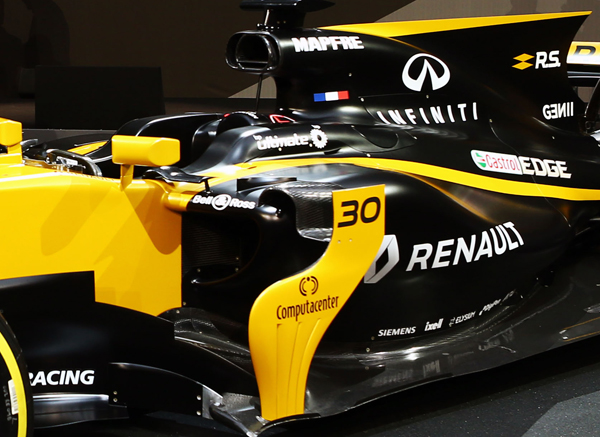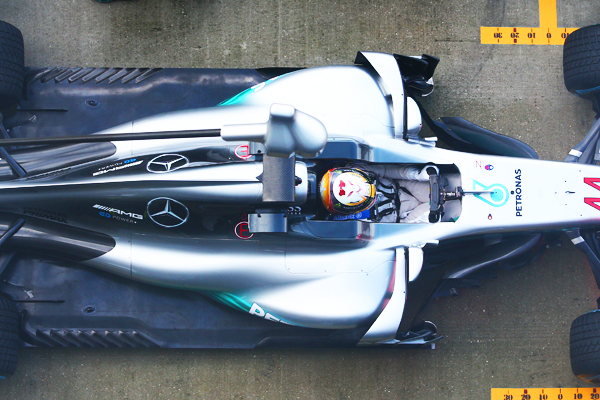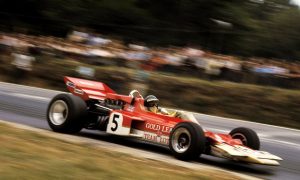
STEPPED NOSE
However, the bulge in the area where the front bulkhead and survival cell meet breaks away from previous Force India designs, with the VJM10 almost bearing a resemblance to the Ferrari F14-T.
A vanity panel has been needed to connect the sloped nose to the almost horizontal front bulkhead. With the height of the vanity panel mandated by the technical regulations, Force India’s aerodynamicists have not been able to smooth out the stepped nose.
The bulge, which does not seem to be housing a ‘S’-duct system for now, is also the result of the suspension legs connecting higher up on the chassis. There can be two complementary reasons to explain the installation: either to draw inspiration from the Mercedes setup and have a lot of components placed on top of the carbon shell and/or to ensure optimum articulation for the wishbones in a bid to better exploit Pirelli’s 25 percent wider tyres, which remain an unknown before pre-season testing.
Working from models supplied by the Italian company, F1 engineers have had to make compromises and keep their options open when designing their new cars.
“We have to give ourselves a lot of room to manoeuvre going into the start of the season because we’ve really got no idea what the set-up of the car is going to be, no idea at all how the tyres are going to perform from a one-lap perspective or from a race perspective,” Green told Racecar Engineering over the winter.
“We don’t know what they are sensitive to or not sensitive to, so it’s a matter of keeping everything open and that is incredibly difficult, because it means you are compromising.”
One can notice that Force India has ditched the conjoined (‘Y’-shaped) wishbone design used last year, and reverted to a more conventional ‘V’-shaped solution. What’s more, the steering rod now lines up with the lower wishbone in a more harmonious way, like Renault has done on its new R.S.17.






